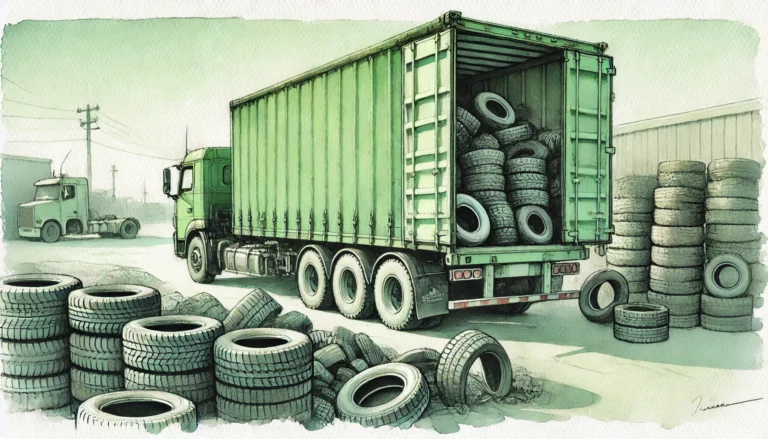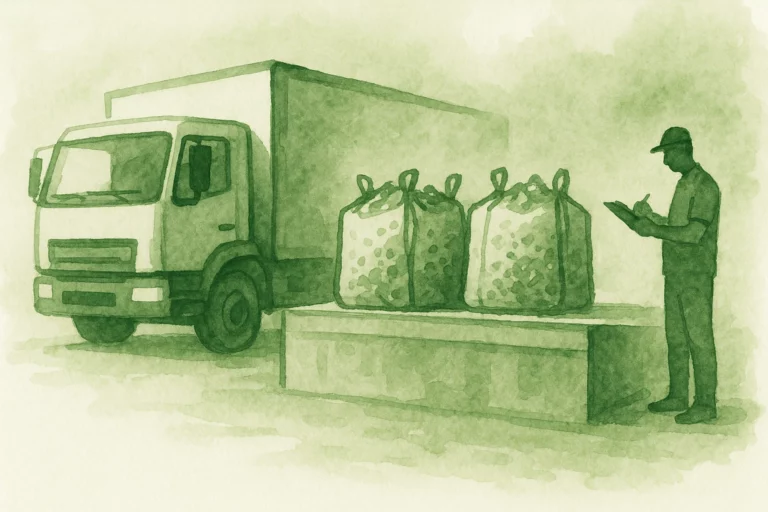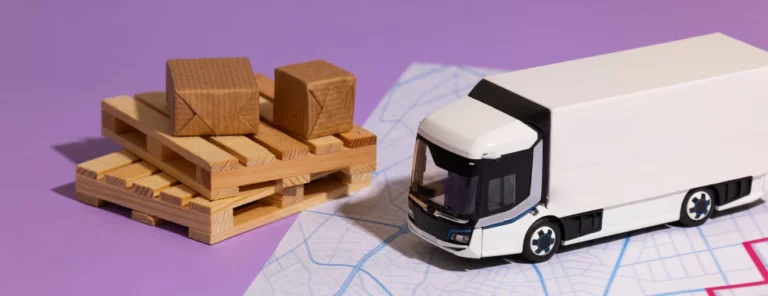Are UPPZ Category 3 materials waste?

In recent months, we have been asked by entrepreneurs to help them prepare a permit for category 3 waste. At other times, we have been asked about a permit for the transport of UPPZ waste. It is important to distinguish between the two, as the terms 'waste' and 'UPPZ materials' should not be put in the same line. Why? What makes them different?
„Category 3 "waste" and UPPZ materials - definitions
Many transporters confuse or mix up the concepts of waste and UPPZ Category 3 material. We then hear of animal waste, category 3 waste. This situation is due to ignorance or incomplete knowledge, or is the result of simple simplification. What do we call waste and when do we refer to UPPZ Category 3 material?
Waste
According to the law (e.g. Directive 2008/98/EC), a waste is any substance or object that the holder disposes of, intends to dispose of or is required to dispose of. Waste must be properly managed, stored, treated or disposed of in accordance with environmental legislation.
UPPZ Category 3 material
This material comes from animals and is not intended for human consumption. However, it is a material that can be reused, for example in the production of feed, cosmetics or biofuels. Category 3 refers to the lowest risk category among products of animal origin.
Are you looking for loads that include UPPZ materials?
Have you obtained a permit to transport UPPZ materials but don't know where to look for them? Get in touch with our logistics department:
dispo@innovationtrading.eu , +48 519 516 869
Category 3 versus neutral waste - differences in legislation
Hauliers who are not well acquainted with the regulations, concerning animal health and animal by-products, may not realise that UPPZ materials are regulated differently from municipal, industrial or hazardous waste. Therefore, they categorise them based on general impressions without realising the different legal pathways these materials have to be managed. Let's look at what acts define what is waste and what can be considered UPPZ material.
UPPZ
From an EU point of view
At EU level, the document regulating the transport of UPPZ materials is Regulation EC No. 1069/2009. It establishes 3 categories of animal products depending on origin and destination. Another Regulation o No. 142/2011, introduces implementing provisions to Regulation 1069/2009. It sets out specific requirements for the transport of UPPZ, such as:
- The obligation to have the relevant carriage authorisations.
- Labelling and packaging requirements for transported materials
- The need for specially adapted means of transport (vehicles must be easy to clean and disinfect).
- Rules for record keeping, including the commercial transport documents that must accompany every UPPZ transport.
As far as the control of the transport of materials on a pan-European level is concerned, this was made possible by the TRACES system. It was established to replace the previously used ANIMO and SHIFT systems. By Commission Decision 2004/292/EC, all EU member states were obliged to participate in the system.
Polish regulations
In the case of Polish regulations, two main documents can be distinguished that regulate the carriage of UPPZ materials. These are:
- Act of 11 March 2004 on the protection of animal health and the control of infectious animal diseases. It regulates animal health issues and includes provisions on the supervision of the transport of UPPZ materials. The supervising authority in Poland is the Veterinary Inspection, which is responsible for controlling transport, monitoring compliance and issuing appropriate permits.
- Order of the Minister of Agriculture and Rural Development of 16 June 2020. Introduces specific requirements for documents used for the transport of UPPZ materials only within Poland
Waste
Waste management and transport according to the EU
The issue of waste management at EU level is regulated by the Directive 2008/98/EC, also known as the Waste Framework Directive. It contains general principles for waste management throughout the European Union. It promotes a waste management hierarchy which involves:
- Waste prevention
- Preparation for re-use
- Recycling
- Other forms of recovery, e.g. energy recovery
- Disposal
The directive introduces the 'polluter pays' principle and the extended producer responsibility (EPR) principle, i.e. the obligation for producers of goods to bear the costs of waste management. It also requires Member States to set recycling and landfill reduction targets.
The rules for the transport of waste in Europe are in turn described in Regulation 1013/2006/EC. It regulates the transboundary transport of waste to ensure that it is properly managed. Depending on the degree of their harmfulness, it also imposes an obligation to register shipments and use strict documentation, including a notification system to monitor waste shipments between EU countries and beyond.
Polish approach to waste management
The most important document establishing the principles of waste management and transport in Poland is the Waste Act of 14 December 2012, as amended. It answers the following questions, among others:
- Who is allowed to transport waste? Under what conditions?
- Who must keep records of waste?
- Who is obliged to register with BDO?
In addition to the aforementioned legislation, the issue of waste is also addressed by the relevant regulations:
Order of the Minister of the Environment of 7 October 2016. on specific requirements for waste shipments. It contains, inter alia, provisions on:
- Secure waste during transport to prevent dispersal or leakage.
- Proper marking of vehicles transporting waste, especially hazardous waste.
- Sanitary and technical requirements for vehicles used to transport waste.
Decree of the Climate Minister of 11 September 2020. on specific requirements for the storage of waste. It is key to ensuring proper waste management, minimising risks to the environment and public health. It sets out requirements for:
- The conditions and methods of storage of waste, both on the sites where it is produced and in the installations designed to collect and treat it.
- The length of time the waste can be stored.
- Requirements for securing waste during storage.
Category 3 waste or 'ordinary' waste?
In some cases, hauliers may not receive sufficiently clear information from those ordering them to transport. In addition, if the documentation accompanying the load does not clearly distinguish that the materials transported are UPPZ category 3 and not waste, the carrier may automatically classify them as waste on the basis of perfunctory data. The lack of precise information on what rules and regulations apply can lead to confusion and, in extreme cases, legal consequences. All because the driver will not be adequately prepared.
On several occasions, the transport companies we work with have already alerted us to problems that have arisen through unclear or inaccurate information from freight forwarders or other parties who have outsourced transport to them.
Other concerns
- General treatment of materials as something 'unwanted'. Both waste and Category 3 UPPZs are usually transported for treatment, disposal or further management, resulting in both types of material being seen as something 'unwanted' or 'leftovers' from production. Carriers may therefore see no need to distinguish between these terms, treating both cases as 'waste' in the colloquial sense.
- Lack of sufficient training. Often hauliers do not receive specific training on the differences between waste and UPPZ materials. Without this, hauliers may operate on their own assumptions without being aware that the regulations for transporting these materials are different and the procedures in place differ depending on whether waste or UPPZ materials are being transported.
- Unclear definitions and terminology. The terminology associated with UPPZ Category 3 materials can appear unclear or confusing, particularly when terms such as 'by-products' are used. For someone without knowledge of the detailed regulations, 'by-products' can easily be associated with 'waste', adding to the confusion.
Understanding the differences between the products discussed in the article is crucial, especially for hauliers who often treat UPPZ Category 3 materials as waste, leading to erroneous transport practices. To avoid problems, it is essential to clearly label the materials being transported and to know the relevant regulations. By following these rules, materials can be properly managed and the risk of - often very costly - errors can be minimised.






